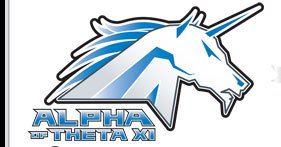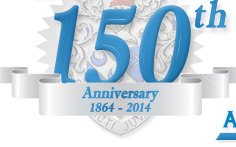Matt Glaccum, A1324
mglaccum@geosphereinc.com
1490 Sage Avenue. For the Brothers of Alpha Chapter, these words evoke the warm feeling of home away from home during the course of their studies at RPI. Even for those who do not live at the Chapterhouse, it represents a comfort zone of sorts being close to campus and providing a place where one can relax and perhaps forget the stress of life as an RPI student if but for a short while.
As the Chapterhouse turns 75 years old this year, generations of Brothers have enjoyed its confines; however, it was not always so. We can be grateful that the many Brothers before us who struggled to give Alpha Chapter a place to call its own finally succeeded after years of effort. Here is one account of their story pieced together from news bulletins, letters and other publications in the Theta Xi Archives. Some of these documents may be found under the historical documents heading of this section for your perusal.
Background
After the catastrophic fires of 1904 which destroyed most of the school's buildings and equipment in downtown Troy, RPI President Palmer C. Ricketts, A84, and the RPI Board of Trustees were faced with the daunting task of picking up the pieces. Rejecting an offer for the Institute to be assimilated into Columbia University, Brother Ricketts and the Board instead focused on building anew 'up the hill' from Troy. With donations from alumni and generous contributions from some of the leading philanthropists of the age, the rebuilding of the school became a reality.
During this same time, the Theta Xi Fraternity had expanded to nine chapters capped by the chartering of Iota Chapter at Washington University in early 1905. With further fraternity growth on the horizon, a centralized governing body was adopted in the form of the Grand Lodge in February of 1906; Major William H. Wiley, A11, was elected the first President, serving in this capacity for 17 years. During this period, chapters were being added at the rate of 1 or 2 a year and many of these had or were beginning to build or buy their own houses. It was at this time that Alpha alumni began to seriously look at providing the Alpha Chapter with a permanent place of its own.
Details are a little sketchy about the accommodations that the Alpha Chapter had during the early part of the 20th century. Before this time, details are even murkier. Records do show that the Chapter used the building at 122 1st Street from early 1903 to 1911 before calling the Farrell House at 245 Hoosick Street its home from late 1911 to the middle of 1915. Eventually, the Chapter moved to 2347 15th Street where it rented the house on the premises. By and large, though, none of these locations was considered a permanent, satisfactory solution if the \"fraternity is to maintain its position at Rensselaer.\"
Creation of the Theta Xi Association
From the current understanding of this period in time, the first effort at raising funds began in 1908 and continued in 1909 leading to the creation of the Theta Xi Association of Troy, New York. This Association which-- as we know--continues to this day, was originally incorporated to not only \"promote social intercourse and mutual improvement\" but also to \"acquire and hold real property\" and \"to erect, improve or furnish, manage and operate a building or buildings thereon for the occupancy, use and benefits of its said members.\" The officers of the new Association, William H. Wiley A11 as President, Henry W. Hodge, A105, as Treasurer and Frank R. Lanagan, A196, as Secretary, began in earnest their efforts to secure a piece of property near the school grounds. In March of 1910, even Brother Ricketts was implored for help to determine a suitable piece of land to build on. Finally, by the following year,
a lot was purchased for $2500; this land, though, is not where the Chapterhouse sits today.
In 1911, the scene that would greet the visitor overlooking the ‘new' RPI campus would be vastly different from the one seen today. None of the ‘green roof' buildings east of Sage Laboratory including the '87 Gym, Troy Building, Ricketts Building, or Quad Dormitories had yet to be erected at the Institute. It was just south of the school's property along 15th Street that the Theta Xi Association procured land approximately 100' by 145' in size. (An adjacent lot with 100' of frontage to the south was also acquired at a later date sometime before 1926. These parcels have since become part of the Institute grounds and today are taken up by the plaza between the CII and the pedestrian bridge over 15th Street and by the RPI Playhouse.)
First Attempts to Build
The Association had secured a prime lot to build next to the Institute grounds but still had to look toward having architectural plans created and raise the money to build the chapterhouse and furnish its interior. The first known building plans come from a booklet published by the Association in 1913 to \"give the members of the Fraternity an idea of the size of the building needed and the accommodations required.\" In it, were actually two sets of plans: one was prepared by architect Edwin F. Gillette, A100, and the other was commissioned under the guidance of Brother Lanagan. From correspondence between Brother Lanagan and Brother Hodge after publication of the booklet, it appears that solicitation for funds did not go well in part as Brother Hodge explains \"engineering is now at such a frigh tfully low ebb that I fear none of these men will be willing to increase their subscriptions.\" Eventually, by 1916, both Brother Hodge and Brother Lanagan wrote that they could not continue to put forth the effort to help raise more funds or to move forward with a building plan. They looked for others, perhaps a local committee, to take up the cause but it would be another five years before more decisive action would be undertaken. The reason for this is not entirely known because of the lack of documentation, but America's involvement in World War I probably contributed to the lack of action.
On October 19th, 1921, a meeting was held in New York where a number of the Alpha alumni (or honoraries as they were then referred to as) came together to take up the debate once more. Building upon the work undertaken by the Association previously, two committees were named: the Committee on Organization and the Committee on Plan. In effect, a reorganization of the Association took place with William H. Wiley A11 as President, Daniel L. Turner, A136, as Vice-President, and John C. Peck, A216, serving as Secretary and Treasurer. In 1922, a booklet detailing the newest efforts was published and sent out to the members. In it were the proposed building plans drawn up by Lawlor & Hasse of New York City, the firm which was also providing architectural services to the Institute. This design for the chapterhouse conformed to the style of the school (Quad) dormitories on 15th Street that would be immediately adjo ining. Again, donations from alumni were slow in coming and the anticipated
building completion date of September 1923 went by unrealized; a large push for this completion date most likely had to do with the Centennial Anniversary of the Institute the following year. Years passed by before the Association would decide to head in a new direction.
The Alpha Chapter's New Home
Toward the middle of the decade, a new development east of 15th Street came into being where a number of fraternities at the school bought land. The Association, sensing a change in the value of building on the 15th Street properties, sold the land in 1926 and bought a 218' x 136' parcel on Sage Avenue that same year. With this change, Joseph P. Lawlor, the chapter's architect, submitted a new design for a house in the English style that we all have come to know. The revised building estimate still meant that more money had to be raised to commence construction. Four more years went by before the Board of Directors of the Theta Xi Association unanimously voted on April 10th, 1931, to have construction of the Chapterhouse begin.
Even with the country in the throes of the Great Depression and, perhaps, because of its effects, the time came to take decisive action. The chief reason as explained in the May 1931 issue of the Alphabet was that the Chapter \"is in a house which is in such poor condition that it is practically uninhabitable and certainly unsanitary\" and \"no suitable houses can be found anywhere near the Institute\" which the Chapter could use. Other deciding factors included in the reasoning to proceed were a very favorable building estimate of about $50,000 from Rosch Brothers of Albany and the need to generate revenue to offset increased property taxes.
The Theta Xi Association was still well short of the funds needed to build the Chapterhouse when the decision to begin construction was made. With only $26,000 in hand, the Association turned to borrowing nearly $24,000 from the Pioneer Building-Loan and Savings Association of Troy. Additional funds to outfit and furnish the interior came from donations received after word spread among the alumni that work was in progress. The actives had also contributed by forming the Alpha Association several years earlier to raise money and by having each active take out a $1000 life insurance policy from which the first $200 was payable to the Association.
June 13th, 1931. As recorded by one of three news bulletins (Spring, Summer, Fall) sent out by the actives that year, a special day for not only was it Commencement Day at the Institute but it also marked the day that the Cornerstone Ceremony took place with Brother Ricketts himself doing the honors of laying the cornerstone of the new building. Among the alumni present in the crowd of a 100 or so were Association Director Stewart Johnston, A117, Association President and National President Edward P. Hamilton, A206, Brother Lanagan, Association Secretary and Treasurer Brother Peck, Association Director Frank O. Parker, A291, and future
Chapter Advisor C. Leonard J. Ager, A327, to name a few. Sadly, Brother Wiley, a major contributor to the building fund, did not live to see this day, having passed away in May of 1925.
Though, the House itself was not quite finished, the active members moved in on September 1st, 1931, in time for the start of the Fall semester. Close to $57,000 had been needed to make this possible with over 20 years of effort to raise money and make plans for Alpha's dream of a permanent home to become a reality. As we may think back to our own years spent at the House from time to time, we should give a little thanks to the many Brothers whose efforts culminated in a place where all Theta Xi's could find home away from home up on the hill in Troy.

Alpha Chapter House Sketch 1932
|

Alpha Chapter House 1932
|

Alpha Chapter House Construction 1931
|
|
|






